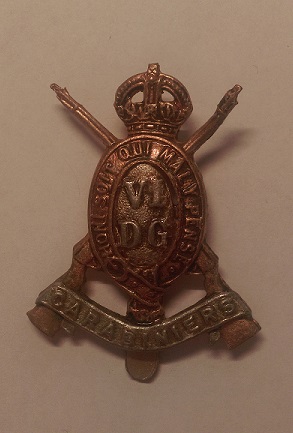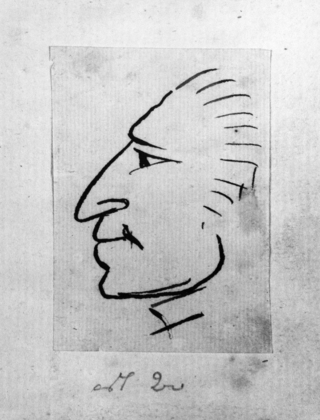Related Research Articles

Field Marshal Sir Robert Rich, 4th Baronet was a British cavalry officer. As a junior officer he fought at the Battle of Schellenberg and at the Battle of Blenheim during the War of the Spanish Succession. He was then asked to raise a regiment to combat the threat from the Jacobite rising of 1715. He also served with the Pragmatic Army under the Earl of Stair at the Battle of Dettingen during the War of the Austrian Succession. As a Member of Parliament he represented three different constituencies but never attained political office.

The Royal Dragoon Guards (RDG) is a cavalry regiment of the British Army. It was formed in 1992 by the amalgamation of two other regiments: The 4th/7th Royal Dragoon Guards and the 5th Royal Inniskilling Dragoon Guards. Based in Battlesbury Barracks, Wiltshire, the regiment currently serves as the armoured cavalry reconnaissance unit of 20th Armoured Brigade Combat Team. Previously equipped with the Scimitar armoured reconnaissance vehicle, it started converting to the Warrior tracked armoured vehicle in 2022.

The Carabiniers (6th Dragoon Guards) was a cavalry regiment of the British Army. It was formed in 1685 as the Lord Lumley's Regiment of Horse. It was renamed as His Majesty's 1st Regiment of Carabiniers in 1740, the 3rd Regiment of Horse (Carabiniers) in 1756 and the 6th Regiment of Dragoon Guards in 1788. After two centuries of service, including the First World War, the regiment was amalgamated with the 3rd Dragoon Guards (Prince of Wales's) to form the 3rd/6th Dragoon Guards in 1922.
Colonel (Col) is a rank of the British Army and Royal Marines, ranking below brigadier, and above lieutenant colonel. British colonels are not usually field commanders; typically they serve as staff officers between field commands at battalion and brigade level. The insignia is two diamond-shaped pips below a crown. The crown has varied in the past with different monarchs; Elizabeth II's reign used St Edward's Crown. The rank is equivalent to captain in the Royal Navy and group captain in the Royal Air Force.

The 4th Royal Irish Dragoon Guards was a cavalry regiment in the British Army, first raised in 1685 as the Earl of Arran's Regiment of Cuirassiers. It was renamed as the 4th Dragoon Guards in 1788 and service for two centuries, including the First World War, before being amalgamated with 7th Dragoon Guards, to form the 4th/7th Dragoon Guards in 1922.

General Sir George Anson, GCB, was a British officer and politician from the Anson family. He commanded a British cavalry brigade under the Duke of Wellington during the Peninsular War and sat for many years as a Whig Member of Parliament.
General John Mostyn was a British soldier, MP and colonial administrator.
Lieutenant-General Edward Harvey (1718–1778) of Cleveland Court, Westminster was a British Army officer who served as Adjutant-General to the Forces.
Lieutenant-General Sir (Horace) Rollo (Squarey) Pain was a British Army officer who commanded 2nd Division.
James Johnston was a general of the British Army, colonel of the Royal Horse Guards then colonel of the Scots Greys where he succeeded his sister's husband, George Preston.

James Johnston was a general in the British Army.
Charles Ross was a Scottish general and Member of Parliament.
De Grangues's Regiment of Foot was an infantry regiment of the British Army during the War of the Austrian Succession. It was commanded by Colonel Henry de Grangues and was ranked as the 60th Regiment of Foot.

Charles Cathcart, 8th Lord Cathcart was a British Army officer. Before 1732 he was known as The Honourable Charles Cathcart.
George Reade, of Shipton-under-Wychwood, Oxfordshire, was a British Army officer and Whig politician who sat in the House of Commons from 1722 to 1734.
General Sir Philip Honywood KB was a British Army officer.
Lieutenant-General John Brown was a British Army officer.
Lieutenant-General Owen Wynne (1665–1737) was an Irish general and commander in the British Army, and a member of the Parliament of Ireland.

Lieutenant-General Sir James Charles Dalbiac, (1776–1847) was a British Army officer and Member of Parliament.
Lieutenant-General Charles Sybourg was a British Army officer.
References
 This article incorporates text from this source, which is in the public domain : Richard Cannon, Historical Record of the Seventh, or Princess Royal's Regiment of Dragoon Guards (1839) page 85.
This article incorporates text from this source, which is in the public domain : Richard Cannon, Historical Record of the Seventh, or Princess Royal's Regiment of Dragoon Guards (1839) page 85.